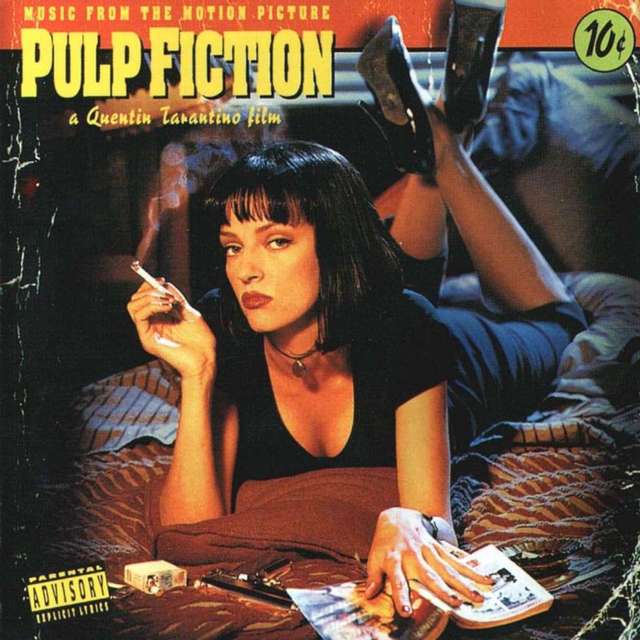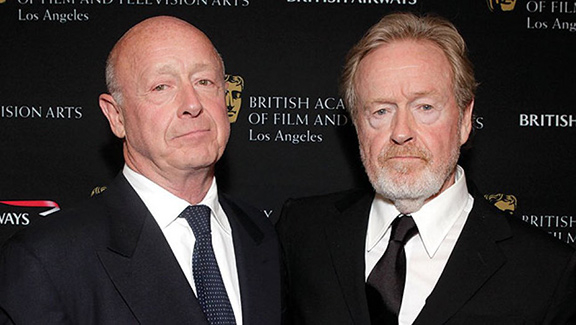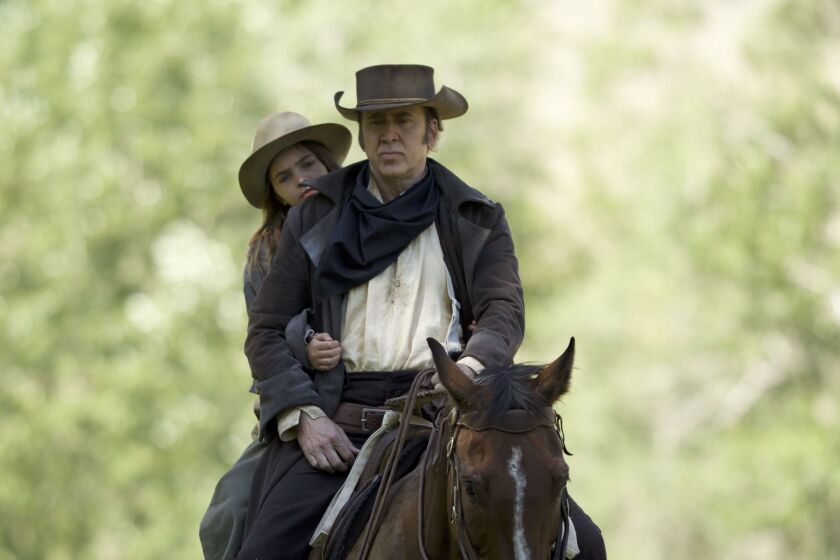
Part Six: More Frustrations, a Strike, and the Birth of Katie
Like every screenwriter, there are a number of “great unmades” in Allison Burnett’s drawer. Perhaps his most industry-respected is his adaptation of Andrea Di Robilant’s celebrated historical romance, A Venetian Affair: A True Tale of Forbidden Love in the 18th Century.
Burnett wrote the script for Tom Rosenberg at Lakeshore Entertainment. In spite of not being produced, Burnett’s screenplay for A Venetian Affair further cemented his relationship with the producer and the studio, which kept Burnett employed for years to come.
A Venetian Affair (Unproduced)
The book, first published in 2005, was based on actual love letters written in the mid-1700’s between a twenty-four year old Venetian noble and a sixteen-year-old English girl with an illegitimate bloodline. Due to their positions in society, their romance is imperiled from the start.
For his screenplay (simply titled A Venetian Affair), Burnett had to flesh out a number of subplots and characters that were merely hinted at in the novel. He also completely invented a framing device for which the story was told through Giacomo Casanova, the Italian author and adventurer, who was a real-life friend of the girl in the story.
Although Italian filmmaker Marco Ponti was in place to direct and multiple sources of financing were secured, pre-production on the film officially fell apart in 2008 after Italian TV conglomerate RAI backed out of the deal. Burnett considers this a “real pity” and now worries that the film will never be made.
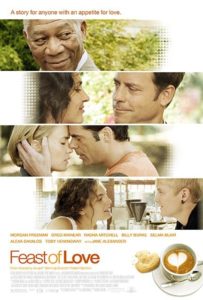
Feast of Love (2007)
Charles Baxter’s 2001 novel, The Feast of Love, had been a long-standing passion project for Tom Rosenberg at Lakeshore Entertainment. Rosenberg, impressed with Burnett’s classically romantic adaptation of A Venetian Affair, felt that the screenwriter was the perfect choice to tackle another adult-oriented drama dealing with matters of the heart.
Like Resurrecting the Champ, Feast of Love is another film of Burnett’s that is very good, at times even great, but also doesn’t quite live up to its potential. Well worth viewing, it has some outstanding moments, great writing, and several excellent performances. These positives are all sadly marred, however, by a forced, sentimental tone that that hangs over the film like an obnoxious ray of sunshine.
Greg Kinnear delivers one of the best performances of his career in Feast, playing a likable, heartbroken coffee shop owner trying to remain optimistic after his wife (Selma Blair) leaves him for a woman. Blair, Morgan Freeman, Radha Mitchell, Billy Burke, and Jane Alexander solidly fill out the ensemble cast of characters, each of whom are dealing with the light and dark sides of love in its many forms.
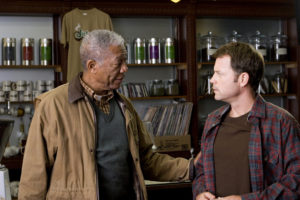
Aside from some tinkering in the opening act’s set-up and some added voice-over narration from a character portrayed by Freeman (which Burnett was asked to write during post-production), Burnett’s script is largely intact for the film’s final cut.
Director Robert Benton, most known for his Oscar-winning work on Kramer vs. Kramer, showcases a talent for pulling committed, spontaneous work out of his actors. Unfortunately, he also appears to be at odds with the script’s tone, as the film consistently shies away from the screenplay’s darker themes of addiction, death, depression, adultery, and the sex industry.
Burnett believes Feast of Love should have been marketed to a sophisticated, indie audience. It is “an R-movie with full frontal nudity and the C-word– all about the collision of love and death.” The trailer and the poster presented the film as a romantic comedy, complete with heart-shaped foam appearing in a mug of cappuccino. Those who possibly would have liked the movie stayed away, those who saw it weren’t quite given what they expected.
Sadly, Feast of Love gained no support from audiences or critics. Roger Ebert’s two-out-of-four-stars review stated that the film “has no organic reality”. In spite of this, Burnett’s work on the film still aided in the development of his career:
“The book was crucial for me, because it was the beginning of my relationship with Tom Rosenberg and Lakeshore. They had produced Autumn in New York years before, and now we began a stretch of my writing five produced movies for them.”
Though the final results were flawed, Rosenberg knew Burnett had a done a wonderful job of adapting a book he loved. Burnett was now at the top of his list for writing assignments, and the two agreed that Burnett would give Rosenberg first dibs on any spec screenplays he penned in the future.
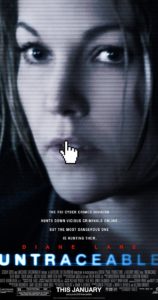
Untraceable (2008)
When Lakeshore purchased a Saw-inspired screenplay by Robert Fyvolent and Mark Brinker, it was originally about a college professor who dresses up as a clown and hosts a website where online viewers can win cash prizes, watching him murder people all over the country. Little was revealed about the mad professor and what motivated him.
When Lakeshore and Screen Gems decided they wanted to go deeper and make a statement about internet voyeurism, they went to Burnett. A stylistic departure for Burnett, the serial-killer thriller Untraceable would become the first film on which he received screen credit for rewriting someone else’s original material.
Burnett added several layers to the final film by heavily altering the killer’s M.O. He now live-streamed his victims being tortured in a variety of creative ways, and the number of viewers who logged on to watch the atrocity would determine the speed at which the victim died.
On top of the dark social satire, Burnett also brought more depth to the killer’s motive. In Burnett’s hands, the killer became the son of a professor (a personal detail from Burnett’s life) whose death by suicide had been broadcast live on national television years earlier. This created a fully realized antagonist with a very human and understandable, albeit twisted, need for justice.
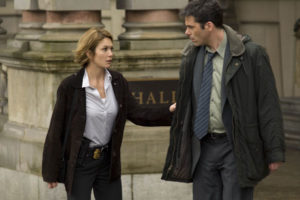
The always-strong Diane Lane stands out as the lead detective on the case, and director Gregory Hoblit does a fine job of building an atmosphere of suspense and anxiety within the film. Where Untraceable falters, however, is in the graphic depiction of the killings themselves. While the film has grander inclinations towards cerebral horror, it falls short by dwelling in audience-pleasing shock that is, in and of itself, antithetical to the greater moral observations of Burnett’s contributions to the script.
In the end, Untraceable is a good and solid thriller, but not quite great and an overall forgettable one. Ultimately, no one seemed to know who the movie was being made for. It was too gruesome to appeal to mass audiences, but not quite exciting enough to appeal to the horror demographic the film was obviously trying to cater to. Budgeted at $35 million, the film barely broke even with it’s combined U.S. and foreign grosses.
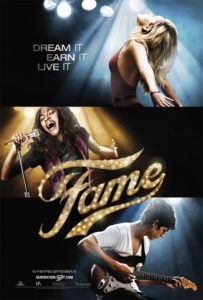
Fame (2009)
Allison Burnett was delighted to take on the assignment of adapting Alan Parker’s 1980 pop culture phenomenon, Fame, for Lakeshore Entertainment. Burnett was a fan of the first film, particularly in how it portrayed young people as serious artists, and was excited to use some of his own experiences in New York as inspiration (as he had done previously in his novels, Christopher and The House Beautiful) when updating the film.
The original film was R-rated and edgy. It realistically portrayed the highs of dreaming big and the lows of crushing disappointments that a group of young students experience while attending the prestigious and cutthroat New York Academy of Performing Arts.
Burnett was asked to bring in a “hard PG-13”, and felt he was able to do so with respect to the original’s integrity. While in casting for Burnett’s finished script, MGM (partnered with Lakeshore for the $18 million production) studio head Mary Parent made the abrupt decision to make the film PG and fire Burnett against Lakeshore’s wishes.
Aline Brosh McKenna (The Devil Wears Prada) was hired and, a week later, much of Burnett’s script was gone and there was a PG movie in its place. In addition, screen time that had been carefully plotted for story and character development had to be excised to make room for music and dance numbers.
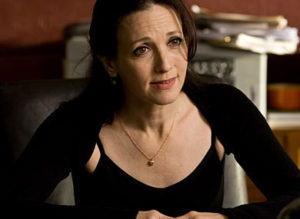
While Burnett receives sole credit for Fame, the final cut of the film is only a remnant of what his original draft (read by this author) once was. The teaching scenes feature excellent performances from Bebe Neuwirth and Kelsey Grammar, respectively, and all originate from Burnett. The scenes stand out in quality, but not without being at complete odds against the teenage fluff that dominates the film’s tone.
The final product is the exact opposite of Burnett’s sincere intentions to write a film about young people and their dreams. Fame, the remake, is an obnoxiously condescending film that destructively panders to wish-fulfillment fantasies and is, possibly, the worst produced film of any screenplay written by Allison Burnett.
The film was widely panned, evidenced by its current 24% rating on Rotten Tomatoes. It also turned a small and disappointing profit for its studio, grossing nearly $80 in worldwide ticket sales.
Burnett was able to put the experience into perspective. Even though he found “the whole thing beyond depressing”, Burnett was able to shrug off the damage fairly easily when he took into account the bright side:
“It was right before the economic crash. Probably the last big pay day of my life.”
Strike!
Once again, Burnett was left financially rewarded but creatively devastated in Hollywood. Fame had been a disaster on so many levels, and all Burnett could do was powerlessly watch it all happen before him just as he had many times throughout his career. He was ready to return to the literary world, the only place he was guaranteed creative control over his work, in spite of the obscurity that most likely awaited it upon completion.
It was also the time of the 2007-2008 Writer’s Strike (not to mention the nationwide financial crisis), which meant that anyone in the Writer’s Guild could not write a word for television or film. Burnett more than welcomed the break, and decided to explore a new, non-B.K. voice for his next novel.
While trying to promote his previous novels, a friend of Burnett’s suggested he use MySpace as a publicity tool. The friend had his teenage son and his high school friends add Burnett on the social media platform. After his exposure to current youth culture, he became enthralled in the generation that was growing up saturated in social media. Burnett explains:
“Many of these kids — all girls — used it as a blogging platform. I had read through their lost, lonely, confused, confessional blogs. Years later, while on strike, I thought of those blogs, and it triggered something. I was off and running. The whole novel took me about four months. I would write from dawn until ten o’clock, then picket the rest of the day. I was the happiest striker on the line.”
With that, Katie Kampenfelt was born when Allison Burnett began writing his third novel in the spring of 2007.
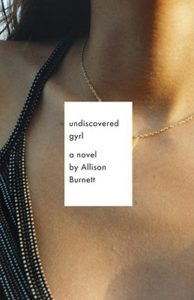
Undiscovered Gyrl (2009)
Undiscovered Gyrl is told entirely from the point of view of Katie Kampenfelt, a teenage girl who has just graduated high school and is taking a year off before college to find herself. Following the advice of her high school English teacher, Katie starts a blog as a creative outlet. She explains: “I have always excelled at creative writing but I suck at grammar and punctuation and can barely write my own name without spell-check (Ms. Rath thinks I’m mildly slysdexic. Ha!)”
We follow Katie’s adventures through blog entries. Her audience is her many loyal followers who love, hate, judge, and live for her frank, detailed accounts of her sexual escapades with various men of all ages: “One wonderful thing about hooking up with an older guy is that you don’t have to reciprocate.”
Wildly narcissistic, Katie is programmed by societal trends and the abuse in her past to live out her life on full display for strangers. She is a damaged soul with crackling wit and an undeniable charm that bewitches her loyal readers, perhaps herself most of all: “Welcome to my reality show.”
Burnett captures Katie’s voice clearly and empathically. She feels so real she can’t help but unwittingly represent an entire generation of girls out there behaving, feeling, and blogging just like her. She is one of many undiscovered girls living their secrets (and their lies) in public, and leaving nothing for themselves.
By the book’s end, we know that Katie wants to “live without describing and analyzing everything I do”, but the harsher (though ambiguous) realities that face her may not allow that. Through his intimate and haunting portrayal of Katie, Burnett captures a piece of the zeitgeist, but in a way that isn’t obnoxiously self-proclaiming or self-congratulatory.
Once the book was complete in the spring of 2008, it sold rather quickly to Vintage Books through Endeavor, Burnett’s agency. Their top literary agent in New York, Richard Abate, was enthusiastic about the book and sold it as a modern-day The Catcher in the Rye. It was published in August of 2009.
The book became something of a minor cult success. Many teenage girls who have come across Undiscovered Gyrl see themselves (or want to see themselves) as the clever, carefree, and enchanting young Katie, while also relating heavily to her hidden loneliness, pain, and promiscuity.
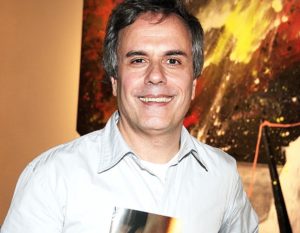
It also garnered some excellent reviews. The L.A. Times gave the book a rave, saying that Katie’s first-person voice is “intensely self-aware, angry, alienated and filled with teenage narcissism and pain.”
As the book gained a small and loyal group of fans, readers began to speculate and spread online rumors that book (and it’s Burnett Epiphany ending) was, in fact, based on a true story and that Katie Kampenfelt was a real girl.
Burnett coyly won’t confirm or deny this, but will concede that Katie was, indeed, more than partially inspired by a real girl he once knew, who used to call him and fill him in on all the details of her spirited and reckless life.
Our piece on Allison Burnett will continue in Part 7 of 9, which will focus on his third novel featuring B.K. Troop and his first screenwriting credit for a blockbuster hit.

